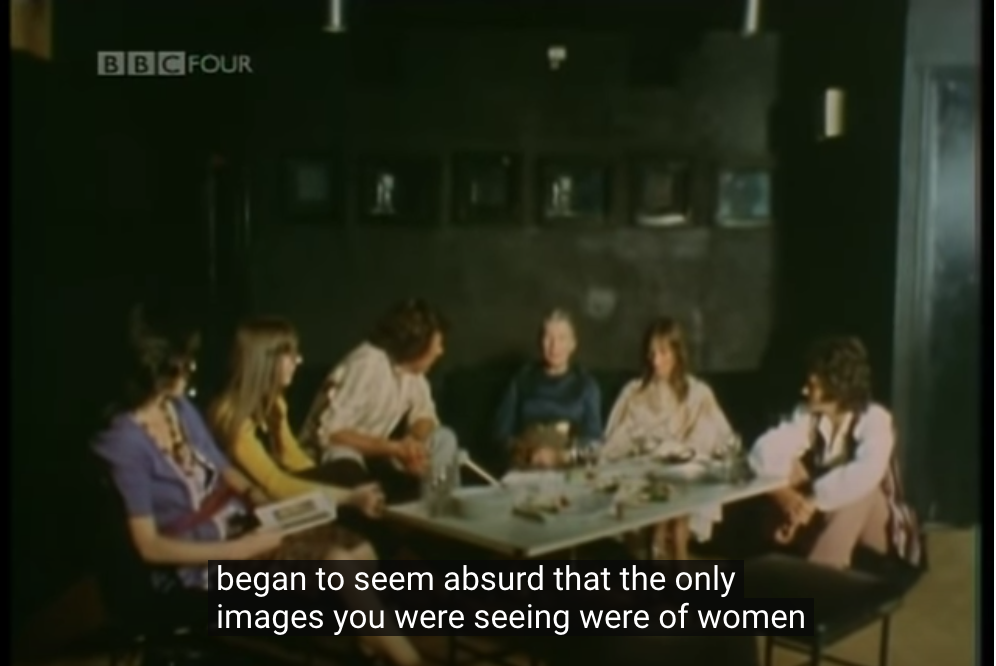John Berger's Ways of Seeing
Giving Women a Seat at the Table

It was extraordinarily refreshing to see Berger cede half of an episode to a panel of women, to hear their relationships with artistic depictions of women.
The first woman's opinion, that she feels disconnected from nude paintings because they are idealized to the point of being entirely unrealistic, really spoke to me.
Like when magazine covers are heavily photoshopped, there is a line where the images no longer feel like something that a real woman can be, or may want to be.
She goes on to say that the nude genre being almost entirely depictions of women are "humiliating", because the men are all shown in clothing, and only the woman lacks them.
It takes away the power that can be held in a female nude, because it is clear it exists for the sake of the men, and it is a one-sided relationship.
The male painter is in control of how the woman in perceived, and by choosing her to be nude, and in the pose she is, he makes her a target of male pleasure.
Because she is ultimately a painting, she has no agency to escape these male decisions. It cannot be reclaimed as a way of expressing her own sexuality, because all the choices were made by a man.
This discussion begins at 14:50 in
Episode 2.
The Assumptions of Children

In the first episode of Ways of Seeing, Berger shows a Caravaggio painting to a group of children, and asks them to figure out what it is depicting.
In order to figure it out, the children think of similar art they've seen in the past. One child thinks the central figure is Jesus because they occupy the center seat at a table and are holding themselves like a leader.
They also relate it to themselves. The majority of the girls see female features in the figure, and the majority of the boys see male features.
Beyond physical appearance, they try to think why they themselves would make the expressions and motions that the painted figures are.
From there, they are able to compose hypotheses on what is being depicted.
I appreciated this very much because it shows there is no knowledge barrier to being able to reflect upon and analyze art.
Often there is an expectation in academia that in order to participate, you must be able to cite every thinker, every related text, to be taken seriously.
But these children are able to grasp significant elements of Caravaggio's painting by comparing it to the world around them, and their analysis is not diminished in value because they likely can't pronounce his name.
This discussion begins at 25:50 in
Episode 1.